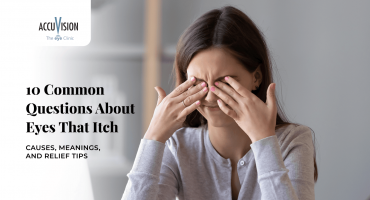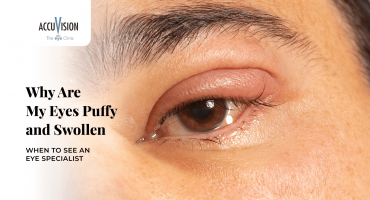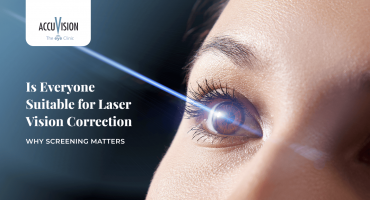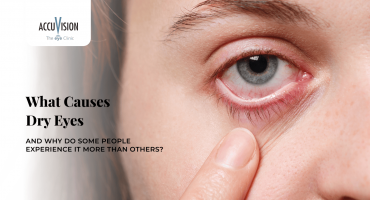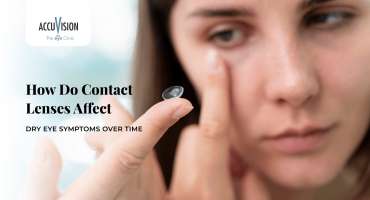- What Are Yellow Eyes?
- Common Causes of Yellow Eyes
- Identifying the Yellow Eyes Symptoms
- How to Treat Yellow Eyes
- Home Care Tips
- When to See a Doctor
- Conclusion and Takeaway
- FAQs:
How to Get Rid of Yellow Eyes

Noticing a yellow tint in your eyes can be worrying. This change, often called “yellow eyes,” is not only about appearance but can also signal underlying health concerns. The yellowing usually develops in the sclera, the outer layer of the eye, and is often linked to a buildup of bilirubin in the blood. Sometimes it may be caused by minor or temporary factors, but in many cases it points to conditions involving the liver, gallbladder, or blood. Identifying the cause early and seeking timely care is important for both eye health and overall well-being.
In this article, we look at why eyes turn yellow, the symptoms that may occur, and the treatments that can help restore clarity and protect long-term health.
If you notice yellowing in your eyes, it’s essential to seek medical advice from a licensed healthcare professional. This article provides general information to help you understand possible causes and treatments.
What Are Yellow Eyes?
Yellow eyes occur when the sclera, the normally white outer coating of your eyeball, develops a yellowish discolouration. The sclera is a dense, fibrous tissue that provides structure to your eye and serves as the attachment point for eye muscles. When functioning normally, it appears bright white, creating a clear contrast with your coloured iris.
The yellowing happens when a substance called bilirubin accumulates in your bloodstream and tissues. Bilirubin is a yellow pigment produced when your body breaks down old red blood cells. Normally, your liver processes bilirubin and eliminates it through bile. However, when this system malfunctions, bilirubin levels rise, leading to visible yellowing.
It is important to distinguish between mild discolouration and true jaundiced eyes. Slight yellowing might occur with age or from extended sun exposure, appearing as a faint cream or ivory tone. In contrast, jaundiced eyes present as distinctly yellow, sometimes progressing to an orange or even greenish tint in severe cases. Jaundice typically affects not only the eyes but also the skin, particularly noticeable on the face, chest, and palms. Yellow sclera often serves as an early warning sign of underlying health conditions that require medical evaluation and treatment.
Common Causes of Yellow Eyes
Understanding yellow eyes helps identify the appropriate treatment path. The condition most commonly stems from problems affecting the liver, gallbladder, or blood.
- Liver conditions: These represent the most frequent cause. Hepatitis, an inflammation caused by viral infections or alcohol abuse, disrupts normal bilirubin processing. Cirrhosis, where healthy tissue is replaced by scar tissue, severely limits liver function. Fatty liver disease can also compromise the liver sufficiently to cause jaundice.
- Gallbladder and bile duct problems: Blockages in these areas prevent bilirubin from leaving the body normally. Gallstones can obstruct the bile ducts, causing bile to back up into the bloodstream. When bile flow is disrupted, bilirubin levels rise and lead to yellowing of the eyes.
- Blood disorders: Certain conditions increase the breakdown of red blood cells, producing more bilirubin than the liver can handle. Haemolytic anaemia and sickle cell disease are common examples. In some cases, genetic conditions such as Gilbert’s syndrome affect how bilirubin is processed, even when the liver itself is healthy.
- Medications and toxins: Some substances can damage the liver or interfere with bilirubin metabolism. Paracetamol overdose, specific antibiotics, and excessive alcohol intake place a heavy strain on liver function and may result in jaundice.
- Eye-specific causes: Sometimes, the reason for yellowish eyes lies within the eye itself rather than in the liver or blood. A common example is pinguecula, a harmless yellowish growth on the conjunctiva, the clear membrane covering the white of the eye. It can give the eye a yellow tint but is not related to jaundice or bilirubin buildup. This condition does not affect vision or indicate liver disease, although some people may mistake it for yellow eyes caused by systemic problems.
Identifying the Yellow Eyes Symptoms
Yellow eyes symptoms extend beyond the visible discoloration, often accompanied by other signs that provide clues to the underlying cause.
Visual changes are the most obvious indicators:
- Yellowing of the white part of both eyes, typically appearing symmetrically
- Yellow tinge to the skin, particularly noticeable on the face, palms, and mucous membranes.
- The yellowing may progress gradually or appear suddenly, depending on the cause.
Urinary and digestive symptoms frequently accompany yellow eyes:
- Dark urine that appears tea-colored or brown indicates excess bilirubin being eliminated through the kidneys.
- Pale or clay-colored stools result from less bile reaching the intestines.
- Nausea, vomiting, or loss of appetite.
- Abdominal pain or discomfort, particularly in the upper right area where the liver is located.
General symptoms reflect the underlying condition:
- Persistent fatigue and weakness
- Unexplained weight loss
- Fever, especially with infectious causes like hepatitis
- Itchy skin caused by bile salt deposits
- Confusion or an altered mental state in severe cases of liver failure
Eye-specific symptoms may occur if local factors contribute:
- Mild irritation or grittiness
- Increased sensitivity to light
- Redness around the yellowed area
The presence and severity of yellow eye symptoms help medical professionals determine the underlying cause and appropriate treatment approach.
How to Treat Yellow Eyes
Yellow eyes treatment must address the root cause rather than simply the discolouration itself. The approach varies significantly depending on what is causing the bilirubin accumulation.
Medical treatment targeting the underlying condition:
- Hepatitis requires antiviral medications or immunosuppressive therapy.
- Gallstones may need surgical removal or procedures to clear blocked bile ducts.
- Blood disorders require specific treatments, such as medications, to prevent red blood cell breakdown.
- Medication-induced jaundice necessitates stopping the offending drug and supporting liver recovery.
- Severe liver disease might require hospitalisation and, in extreme cases, liver transplantation.
Lifestyle modifications support recovery:
- Balanced, nutritious diet rich in fruits, vegetables, and lean proteins
- Adequate Hydration helps eliminate toxins
- Complete avoidance of alcohol
- Sufficient Rest and maintaining a healthy weight
Eye-specific care applies when minor factors contribute:
- Lubricating eye drops for comfort
- Sunglasses for UV protection
- Good eye hygiene practices
Understanding how to cure yellow eyes begins with an accurate diagnosis. The yellowing will resolve once the underlying cause receives appropriate treatment and bilirubin levels return to normal.
Home Care Tips
While home remedies cannot replace medical treatment for yellow eyes, certain supportive measures can aid recovery alongside professional care.
| Home Care Strategy | How It HelpsHow It Helps | Implementation |
|---|---|---|
| Proper Hydration | Helps flush toxins and supports kidney function | Drink 8-10 glasses of water daily |
| Balanced Nutrition | Provides nutrients needed for liver repair | Include leafy greens, berries, lean proteins, and whole grains |
| Herbal Support | Some herbs may support liver function | Milk thistle or dandelion tea (consult a doctor first) |
| Toxin Avoidance | Reduces strain on the liver | Eliminate alcohol, limit processed foods and avoid smoking |
| Adequate Rest | Allows the body to focus energy on healing | Aim for 7-9 hours of quality sleep nightly |
It is crucial to understand that home care serves as a complement to, not a substitute for, professional medical treatment. Always consult healthcare professionals before trying supplements or herbal remedies, as some can interact with medications or worsen liver problems.
When to See a Doctor
Yellow eyes always warrant medical evaluation, but certain situations require urgent attention.
Seek emergency medical care immediately if you experience:
- Sudden onset of yellow eyes accompanied by severe abdominal pain.
- Yellowing combined with confusion or altered consciousness.
- High fever alongside jaundice.
- Persistent vomiting or signs of bleeding.
Schedule a prompt appointment for:
- Any noticeable yellowing of the eyes or skin.
- Yellow eyes persisting beyond a few days.
- Accompanying symptoms like dark urine, pale stools, or unexplained itching.
- Known liver disease with worsening symptoms.
Special considerations:
- Newborns with jaundice require immediate paediatric evaluation.
- Individuals with pre-existing liver conditions should report any yellowing promptly.
- Those taking medications that affect the liver need monitoring.
Professional evaluation involves blood tests to measure bilirubin levels and liver function, imaging studies, and potentially specialist referral. Early diagnosis significantly improves treatment outcomes and prevents complications.
Conclusion and Takeaway
Yellow eyes serve as an important indicator of underlying health conditions requiring attention. Identifying and treating the root cause is essential, as the yellowing represents a symptom rather than a standalone condition. Early recognition and prompt medical evaluation lead to better outcomes, with many conditions responding well to treatment when caught early.
This article was prepared by the clinical team at AccuVision UK, a leading eye care provider with over 23 years of experience in laser eye surgery and specialist ophthalmic care. With clinics in London, the Midlands, and Yorkshire, AccuVision’s expert team of ophthalmologists and optometrists ensures that every article is medically accurate, reviewed for reliability, and aligned with best practices in eye health.
FAQs:
1. What are the common yellow eyes?
Yellow eyes are usually caused by bilirubin buildup due to liver problems, gallbladder issues, blood disorders, medications, or rare eye-specific conditions.
2. What symptoms should I watch for with yellow eyes?
Key yellow eyes symptoms include yellowing of the sclera, dark urine, pale stools, fatigue, nausea, and sometimes itching or abdominal discomfort.
3. How are jaundiced eyes diagnosed?
Jaundiced eyes are diagnosed through a medical evaluation, which may include blood tests, liver function tests, and imaging to identify the underlying cause.
4. What is the recommended yellow eye treatment?
Yellow eyes treatment focuses on addressing the root cause, such as liver disease, gallstones, or blood disorders, along with lifestyle and supportive measures.
5. How can I cure yellow eyes naturally?
Treating yellow eyes involves treating the underlying condition, maintaining Hydration, eating a liver-friendly diet, avoiding alcohol, and following medical guidance.
